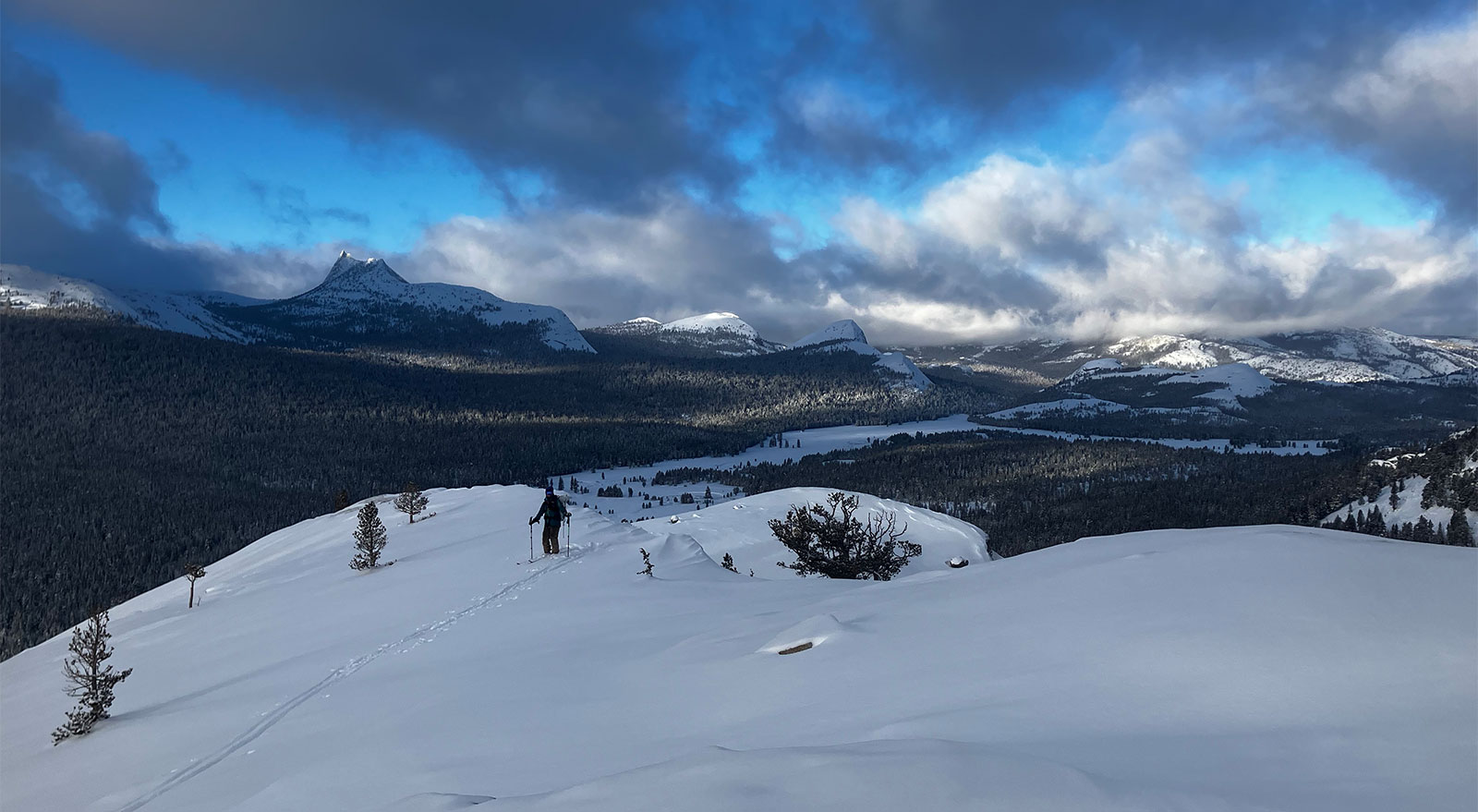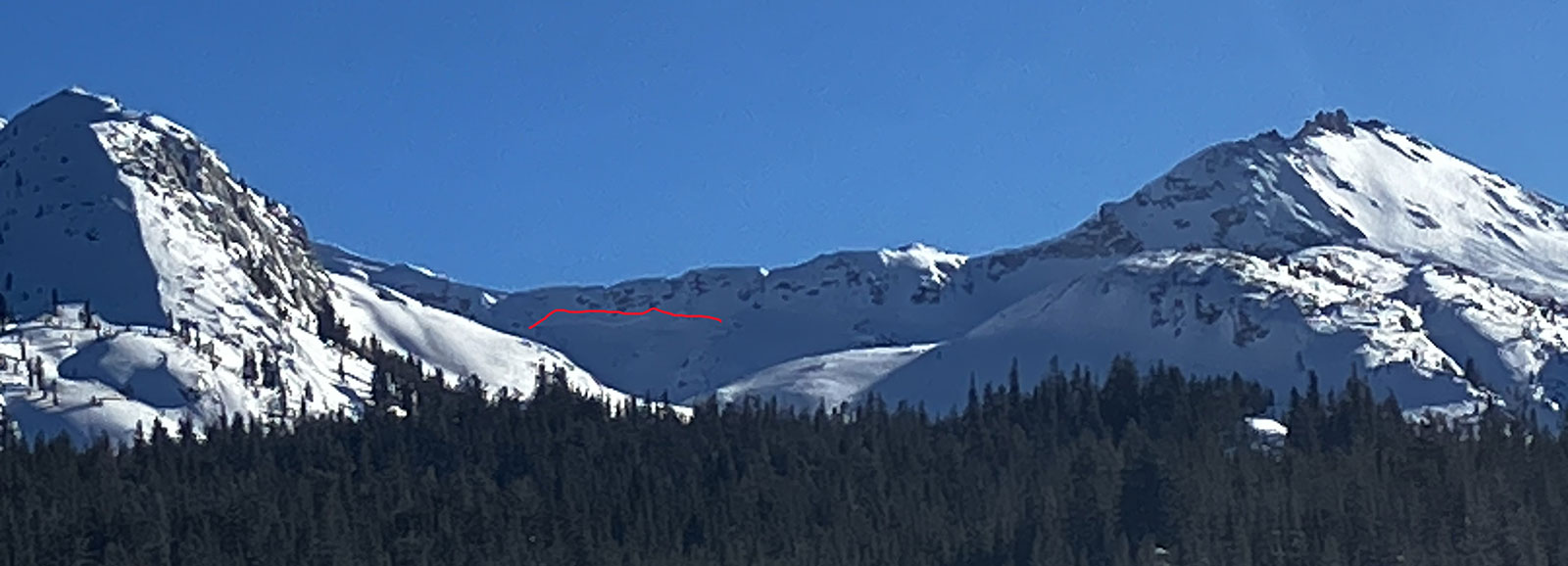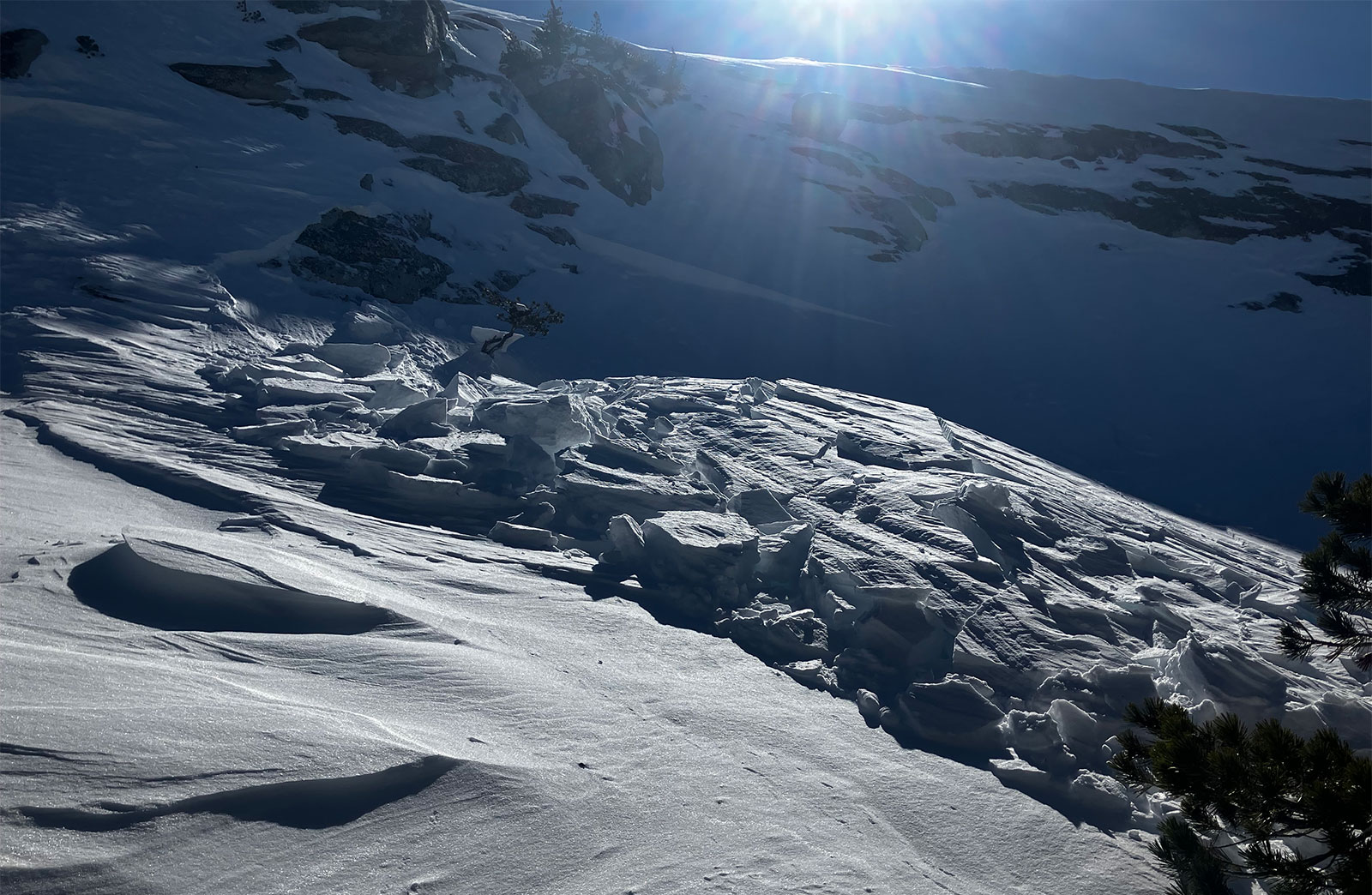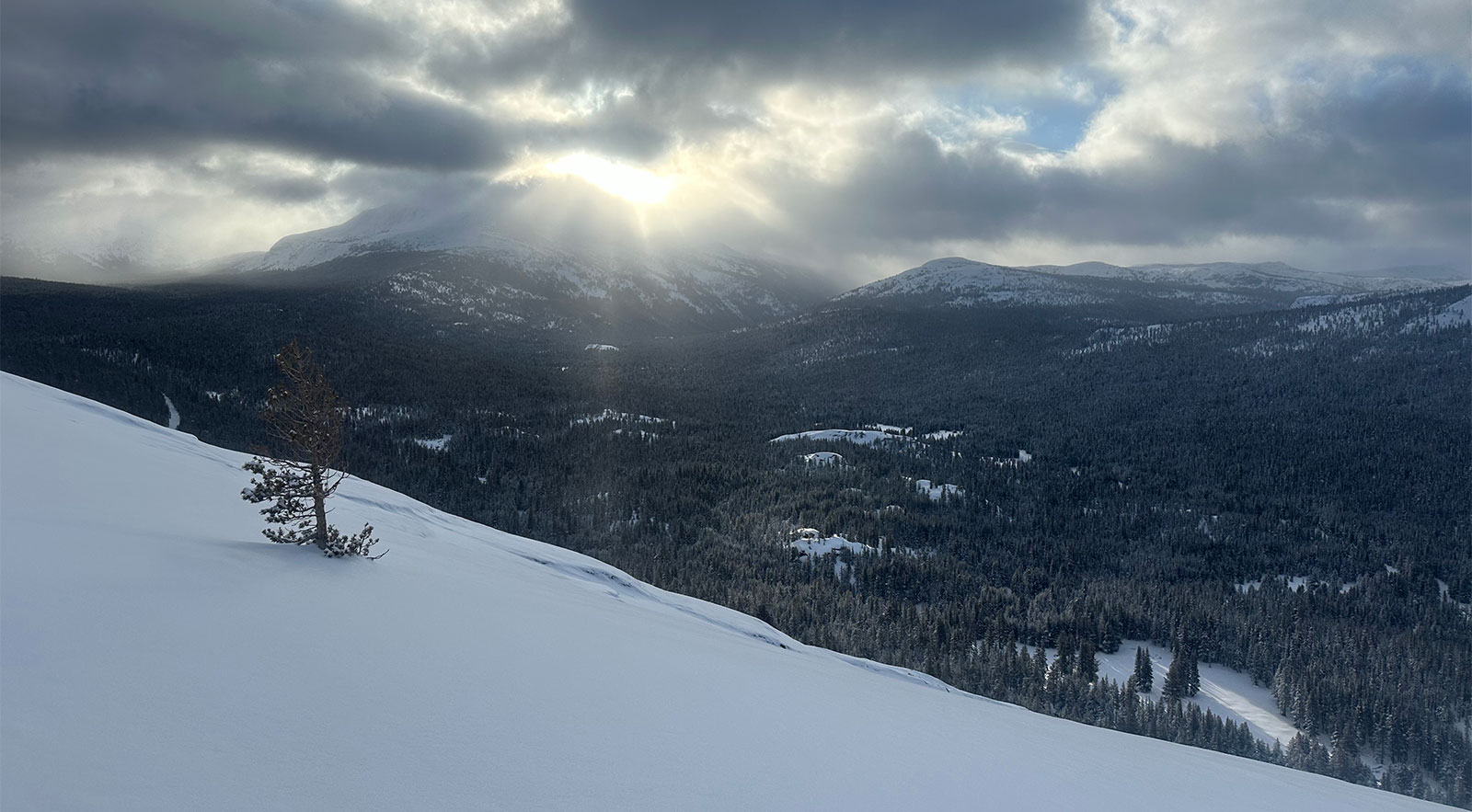New Snow: 8 inches
Settled Snow Depth: 40 inches
High Temperature: 46°F (February 11)
Low Temperature: -4°F (February 9)

Ski Conditions and Weather
This week brought cloudy skies, cold temperatures, and snow showers. The latter part of the week has been sunny with temperatures slightly above average. There was a wind event on the morning of February 10 that sculpted the otherwise pristine snow surface. Present ski conditions are dictated by wind affected snow in most locations. Snow coverage is good on all aspects, but snow depths remain a bit below average for this time of year.
Avalanche and Snowpack Conditions
Please refer to the Eastern Sierra Avalanche Center (ESAC) and the Bridgeport Avalanche Center for the avalanche advisories for this part of the Sierra Nevada.

When the skies cleared this week, we had a chance to have a look around at the avalanche paths on the surrounding peaks above Tuolumne Meadows. We observed two large persistent slab avalanches that occurred sometime during the week. These were naturally triggered avalanches that failed under the weight of the new snow load. They were on north aspects at or above tree line. The persistent slab problem is aptly named, and wilderness travelers should continue to be mindful of this weakness in the basal layers of the snowpack as the consequences of triggering an avalanche could involve the entire depth of the snowpack. Good terrain choices can mitigate the risk.

Touchy wind slabs were observed in the Tuolumne Meadows area following the wind event. This includes a small skier triggered avalanche on a north aspect of Lembert Dome (see photo). Wind slabs become increasingly more stubborn to trigger with time but can still present a hazard days after forming.

Photo credit: Gene Rose.
History of Snow Surveys
“Reality check. Up until 1938, none of the trans-Sierra or high Sierra roads were plowed, forcing the snow surveyors to approach from some [far off] snow-line location. There were also no search and rescue units…” (Rose 71) available at the push of a button. Many surveyors didn’t even have radios.
Most skied or snow-shoed into the mountains. Others used war surplus “weasels” or M-7’s, and later Tucker Sno-cats, snowmobiles, helicopters and airplanes many of which broke down regularly and came with hazards of their own. Nowadays, many course locations lie within designated wilderness and each agency interprets what type of mechanized use is or isn’t appropriate. Shortly after Yosemite National Park banned private snowmobile use along the Tioga Road, the park abandoned the use of the Sno-Cat for snow survey purposes. Now Yosemite National Park employees ski to their snow survey courses. Under some extenuating circumstances when it is unsafe for the surveyors to ski to the courses, a helicopter may be used as a last resort.
Wildlife
While nearing the top of a local ski hill, we heard an unusual sound coming from the stormy sky. We looked up to see a flock of large birds flying north toward White Mountain in loose formation. Our first thought was that it was a flock of geese, unusual but not unheard of this time of year. However, the calls coming from the flock did not fit with that theory. Due to the obscured sky, we were unable to make an identification, but our curiosity was piqued. Later, while removing our climbing skins at the top of said ski hill, we again heard the bird sounds faintly at first and then louder as they got closer. The flock flew directly overhead in the opposite direction as before as if to say “Have another look and listen. Who are we?” Just then, we were taken back to a visit to the Monte Vista NWR in the San Luis Valley of southern Colorado. The birds were unmistakably Sand Hill Cranes! The word “… ‘crane’ derives from the Indo-European root that means to ‘cry out’…” (Beedy & Pandolfino 128).
Questions
The Tuolumne Meadows Ski Hut is open. This primitive cabin is the campground reservation office in the summer and is located along the Tioga Road at the entrance to the campground. It is marked with a sign. There is firewood and 8 bunks that are available on a first-come, first-served basis. For those visiting the Tuolumne Meadows Ski Hut from the east (only) permits are self-issued at the Ski Hut. For those entering from other areas, please see Yosemite’s website: https://www.nps.gov/yose/planyourvisit/wildfaq.htm#winter or you may contact the wilderness office at 209/372-0740. As of this writing, there is electricity and limited phone service in Tuolumne Meadows.
Come prepared, and please make good decisions while traveling in the wilderness!
Read through the following three pages before embarking on any day or overnight snow travel within this park:
You may contact us with any additional winter Tuolumne Meadows related questions but response times may vary if we are away on patrol.

References
Armstrong, Patrick. The Log of a Snow Survey: Skiing and working in the winter world of the Sierra Nevada. Abbott Press, 2013.
Beedy & Pandolfino. Birds of the Sierra Nevada: their natural history, status and distribution. University of California Press, 2013.
Rose, Gene. Snow Warriors: The Heroic Trail of the Early Snow Surveyors. Gene Rose, 2022.
Happy Valentine’s Day fellow snow lovers!
Laura and Rob Pilewski - Tuolumne Meadows winter rangers
